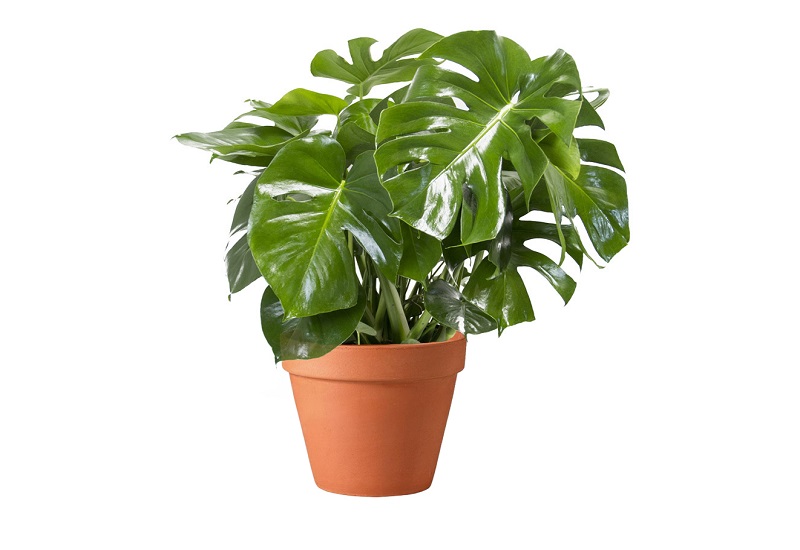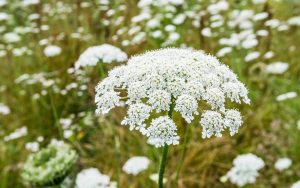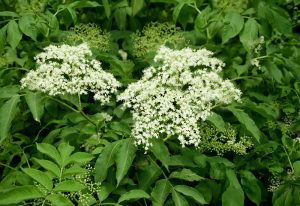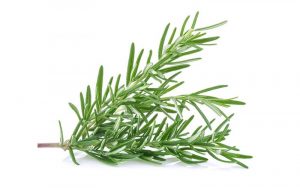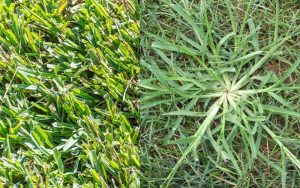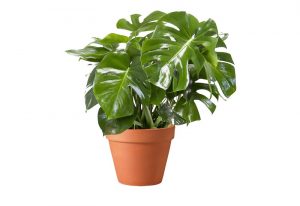If you’re looking to add something unique and beautiful to your home, you may want to consider adding plants that look like Monstera. Often called the Swiss cheese plant, it’s one of the most unique-looking plants around, in addition to being one of the easiest to grow and maintain.
If you’re wondering what makes it so special or how it can enhance your indoor environment, this guide will help you learn all about this unusual species and whether or not it would make a good addition to your home landscape.
Types Of Monstera Plants
Monstera adansonii, or Swiss cheese plant, is one of the most popular varieties of Monstera. Its large, heart-shaped leaves with deep slits or holes are easily recognizable. Monstera deliciosa, or fruit salad plant, is another common type of Monstera. It gets its name from its edible fruit, which tastes like a cross between pineapple and banana.
Other types of Monstera include
- M. borsigiana,
- M. elongata,
- M. karsteniana, and
- M. siltepecana.
These plants are all native to Mexico, Central America, and South America. They range in size from medium to giant. For example, some can grow up to 40 feet tall.
Although these monsters may be intimidating at first glance, they’re actually quite easy to care for as long as you follow some basic rules. To start off, water your plant once per week during the summer months (May through October) and every other week during the winter months (November through April).
Place it in a sunny location where it will get plenty of direct sunlight for about six hours per day. You’ll also want to fertilize your Monstera once per month during the warmer months with an organic fertilizer made specifically for foliage plants.
Be sure to avoid fertilizing them in the winter when they won’t need any extra nutrients. When it comes time to repot your plant, use a potting mix with equal peat moss and soil on top of the fir bark. Add enough water so that when squeezed together, there’s still some moisture left after 10 seconds.
Allow the potting mix to settle before placing your plant inside. You should only have problems if you over-water them; make sure not to leave standing water on their roots for more than three days.
And lastly, beware of pests such as mealybugs, aphids, and spider mites which might try their luck living on your Monstera – always remember pest control isn’t just for humans anymore.
6 Plants That Look Like Monstera
1. Philodendron
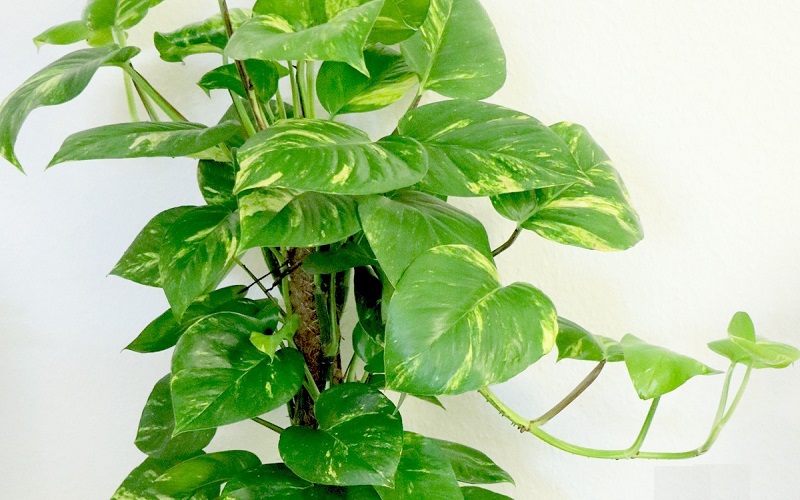
The Philodendron is a genus of about 500 species of flowering plants in the Araceae family, native to tropical America. Many of the species are widely cultivated as houseplants for their attractive, large leaves. Some species are grown as ornamental plants in gardens.
It is a flowering plant in the family Araceae, native to tropical regions of the Americas. The genus is named after the Latin word for monster or hairy, referring to the plant’s large, showy leaves. These plants will climb up trellises or ropes in mild climates, but some also make effective groundcovers.
How to grow and care Philodendron?
You can put them outside during the summer and move them inside when it gets cold. When planting, choose pots with ample drainage holes at the bottom and fill with a potting soil mix that is rich in nutrients. They need bright indirect light indoors and plenty of humidity.
Fertilize once a month with a half-strength fertilizer solution. Be sure to water often enough so that the soil stays moist. When watering, use room temperature water and try not to overwater; water too often, and you risk rotting roots from soggy conditions.
They have specific requirements for fertilizing, lighting, temperature, and humidity, which means they’re difficult to care for if you don’t know what you’re doing.
To avoid burning the delicate foliage in full sun exposure, provide a leaf canopy using other broadleaf plants such as broad leaf varieties of Vinca or Japanese spurge (Pachysandra). Try mixing several different types together; Philodendrons love company.
2. Philodendron Bipinnatifidum
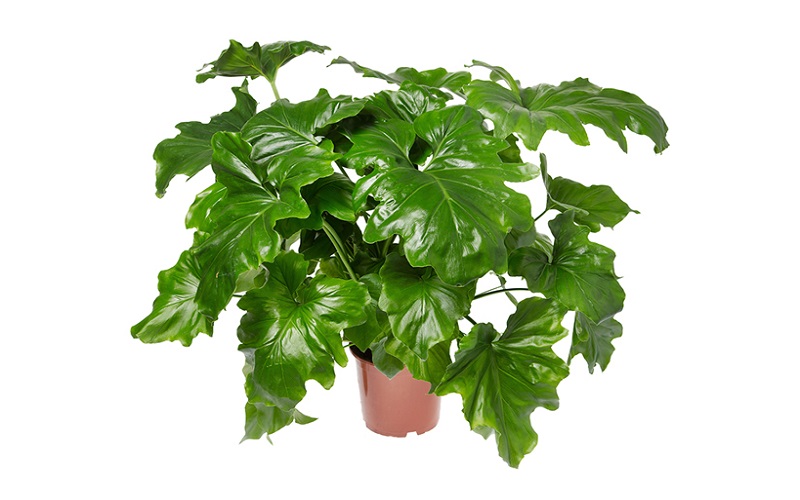
Also known as the lacy tree philodendron, this plant is native to the Caribbean and South America. It’s often confused with its close relative, the monstera deliciosa.
Both plants have similar leaf shapes, but the philodendron bipinnatifidum has deeply lobed leaves that lack the characteristic holes of the monstera deliciosa.
The philodendron bipinnatifidum is a fast-growing climber that can reach up to 20 feet in length. It’s an easy plant to care for and a great addition to any indoor jungle.
How to grow and care Philodendron Bipinnatifidum?
There are many different ways to care for your Philodendron. Like most plants, they need adequate sunlight. Place them in a window or on a shelf near the window, so they get between six and eight hours of light per day. You will also want to water them once every two weeks or so.
They do not require frequent watering, but you should never let their soil dry out completely. Feeding your Philodendron is just as important as watering it because, without nutrients, the plant won’t be able to produce enough chlorophyll.
Use a general-purpose fertilizer every other week.
The philodendron bipinnatifidum loves humidity; make sure to keep their environment moist by spraying them daily.
They prefer moderate temperatures, anywhere from 65-75 degrees Fahrenheit, and thrive in humid environments where there’s plenty of indirect light.
3. Monstera Adansonii
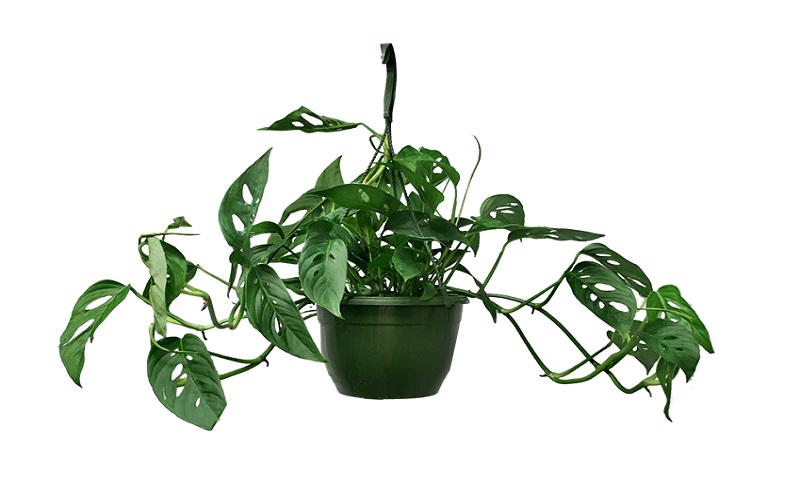
Also known as the Swiss cheese plant, Monstera adansonii is a species of flowering plant native to tropical rainforests of Central and South America. The leaves of this climbing vine are large and perforated, with a distinctive split in the leaf blade. As the plant matures, its leaves develop deep lobes and become more deeply incised. This evergreen vine can grow up to 20 m (66 ft) in length, with leaves that may reach 0.6 m (2.0 ft) in width.
How to grow and care Monstera adansonii?
Growing Monstera Adansonia indoors is difficult because it requires humidity of around 70% or more at all times. One way to increase humidity is by placing it on top of moist soil or bark mulch in an enclosed container with some sort of ventilation.
If you have an indoor pond or fountain, place the pot on top of it; they love sitting on the water. But don’t forget to make sure they’re getting enough light from a window, so they don’t get stressed out from lack of sun.
4. Rhaphidophora

These plants are often confused with Philodendron because of their similar leaf shape. Monstera is native to tropical regions of Central and South America. The leaves of these plants can grow up to three feet long and two feet wide.
The plant gets its name from the Latin word for monster because of its large size. If you’re looking for a plant that looks like Monstera, be sure to check out Rhaphidophora.
How do you grow and care for Rhaphidophora?
Monstera requires moist soil, moderate sunlight, and consistent watering. They can be propagated by cutting sections of the vine into small pieces and inserting them into damp soil or rooting hormone.
It is not recommended to overwater this plant as it is susceptible to root rot. When watering, make sure there is no standing water on the surface of the soil after 10 minutes have passed since watering.
5. Epipremnum Pinnatum
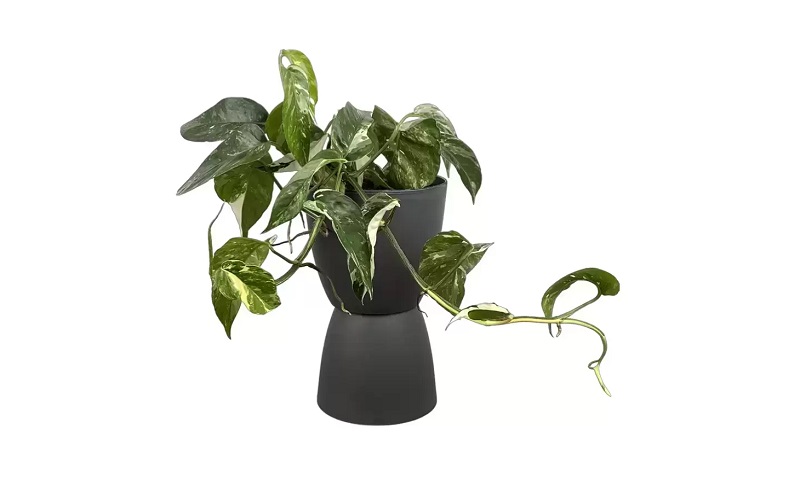
Also known as the devil’s ivy, this plant is a fast-growing climber that can reach up to 20 feet in length. It has glossy, heart-shaped leaves that are dark green with white or yellow variegation. The plant is poisonous if ingested, so keep it away from pets and children.
How to grow and care?
The devil’s ivy is easy to grow but does best in bright, indirect light. It thrives in cooler temperatures (55–72 degrees Fahrenheit), making it an ideal choice for northern regions.
The plant prefers regular waterings from spring through fall, letting its soil dry out in between watering sessions. You can let it go without water for a few weeks in the winter months before resuming more frequent watering sessions.
You may need to fertilize your plant monthly with a diluted balanced fertilizer. The devil’s ivy also attracts lots of attention due to its unusual looks-keep an eye out for aphids and scale since these insects love growing on it. They’re treatable with most garden pesticides.
6. Tauerii

The tauerii, also known as the false Monstera, is a plant that’s native to South America. It has large, glossy leaves that are similar in shape to the monstera adansonii. The tauerii is a fast-growing plant and can reach up to six feet tall.
It’s an easy plant to care for and is tolerant of low light conditions. If you’re looking for a plant that looks like a monstera but is easier to care for, the tauerii is a great option.
How to grow and care?
The tauerii requires little care and is quite hardy; it will not die if exposed to too much water or light. It thrives best when placed in bright indirect sunlight.
However, it can do well indoors under fluorescent lights or near a window with some direct sun exposure (no more than three hours per day). Be sure to place your tauerii away from drafts or air conditioning vents.
Conclusion:
If you’re looking for a plant that looks like Monstera, a few options are available. The most popular option is the rhaphidophora tetrasperma, which is widely available in nurseries and online.
Another option is the Philodendron erubescens, which has similar leaves but is less commonly found. Finally, the Epipremnum pinnatum ‘Aureum’ is a vining plant with leaves that resemble those of the Monstera.
Whichever plant you choose, make sure to do your research to ensure it will thrive in your home.
